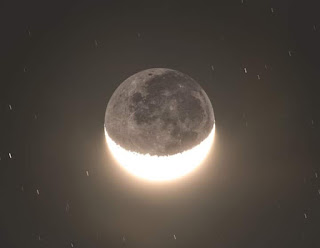Yesterday is the Maximum of the Perseids one of the best weather rains of the Year
The Perseid rain, the popular "Tears of San Lorenzo", will have its maximum activity on the nights of August 11 to 12 and from 12 to 13, when, according to the calculations of the standard models, around 100 meteors per hour (always talking about optimal conditions) The meteor shower takes place from July 17 to August 24. But the best night to photograph it is between August 11 and 12. The peak is August 12. This meteor shower is visible from both hemispheres. Although it is best seen in the northern hemisphere. In the southern hemisphere it has a lower intensity.
How to see the Perseids?
To locate the constellation of Perseus, you must first locate the North Star, the one that marks the geographic north. Following a straight path to the east, we can find a very recognizable formation of 5 stars in the shape of a "W" that corresponds to the constellation of Cassiopeia. If we look under Cassiopeia we will be looking towards Perseus and Andromeda.
It is best to look to the northwest at the beginning of the night covering as much of the sky as possible. Perseus will move east as the night progresses. The most ideal thing then is to look for a dark place with a wide vision of the horizon away from the light pollution of the cities and look up to the north. The best way to observe the rain is with the naked eye. It is not necessary to use either binoculars or telescopes. The brightness of the Perseids is characterized by being quite intense and having a whitish tone. The average number of meteors that we can observe in an hour is between 40 and 50, but at some moments of the night, with luck, astronomers point out, between 150 and 200 can be seen. If you are in the Northern Hemisphere and away from light pollution, you can see more than 40 Perseids per hour! (If you're in a city, you may only see a few every hour; sky watchers in the southern hemisphere will see fewer Perseids as well, and none will be visible below about 30 degrees south latitude).
The night of August 12-13 will be another great opportunity to see the Perseids Find a comfortable spot, avoid bright lights as much as possible (yes, including your phone), and give your eyes some time to adjust to the dark - up to half an hour if you can. The Perseids will appear as fast little rays of light: they get their name because they seem to come from the constellation Perseus (near Aries and Taurus in the night sky) And finally remember that Comet Swift-Tuttle is the progenitor of the Perseid shower.
Credits: blogs.nasa.gov



Comments
Post a Comment